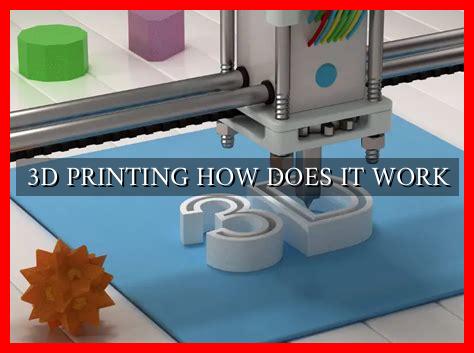-
Table of Contents
3D Printing: How Does It Work?
3D printing, also known as additive manufacturing, is a revolutionary technology that has transformed the way we design and create objects. This process involves building three-dimensional objects layer by layer from a digital model, allowing for complex shapes and intricate designs to be produced with precision. In this article, we will explore the inner workings of 3D printing and how it has revolutionized various industries.
The Basics of 3D Printing
At its core, 3D printing involves the following key steps:
- Creating a 3D model: The first step in the 3D printing process is to create a digital model of the object you want to print. This can be done using computer-aided design (CAD) software or by scanning an existing object using a 3D scanner.
- Slicing the model: Once the digital model is ready, it is sliced into thin layers using slicing software. This step determines how the object will be printed layer by layer.
- Printing the object: The sliced layers are sent to the 3D printer, which then builds the object layer by layer using materials such as plastic, metal, or resin.
. The printer follows the instructions from the slicing software to create the final object.
Types of 3D Printing Technologies
There are several types of 3D printing technologies, each with its own unique process and materials. Some of the most common types include:
- Fused Deposition Modeling (FDM): This is one of the most widely used 3D printing technologies, where a thermoplastic filament is heated and extruded through a nozzle to create layers.
- Stereolithography (SLA): SLA uses a liquid resin that is cured by a laser to create solid layers, resulting in high-resolution prints.
- Selective Laser Sintering (SLS): SLS uses a laser to sinter powdered materials, such as nylon or metal, to create objects layer by layer.
Applications of 3D Printing
3D printing has revolutionized various industries, including healthcare, aerospace, automotive, and consumer goods. Some of the key applications of 3D printing include:
- Medical implants and prosthetics: 3D printing has enabled the customization of medical implants and prosthetics, leading to better patient outcomes and faster recovery times.
- Aerospace components: Aerospace companies use 3D printing to create lightweight and complex components, reducing fuel consumption and improving performance.
- Prototyping and product development: 3D printing allows for rapid prototyping and iteration of designs, saving time and costs in the product development process.
Challenges and Future Trends
While 3D printing has made significant advancements in recent years, there are still challenges to overcome, such as material limitations, speed, and cost. However, researchers and industry experts are working on addressing these challenges and exploring new possibilities for 3D printing.
One of the future trends in 3D printing is the use of advanced materials, such as biodegradable plastics and carbon fiber composites, to create stronger and more sustainable objects. Additionally, advancements in 3D printing technology, such as faster printing speeds and larger build volumes, are expected to further expand the capabilities of this technology.
Conclusion
3D printing is a transformative technology that has revolutionized the way we design and create objects. By understanding the basics of 3D printing, exploring different printing technologies, and examining its applications across various industries, we can appreciate the impact and potential of this technology. As 3D printing continues to evolve and improve, it will undoubtedly shape the future of manufacturing and innovation.


